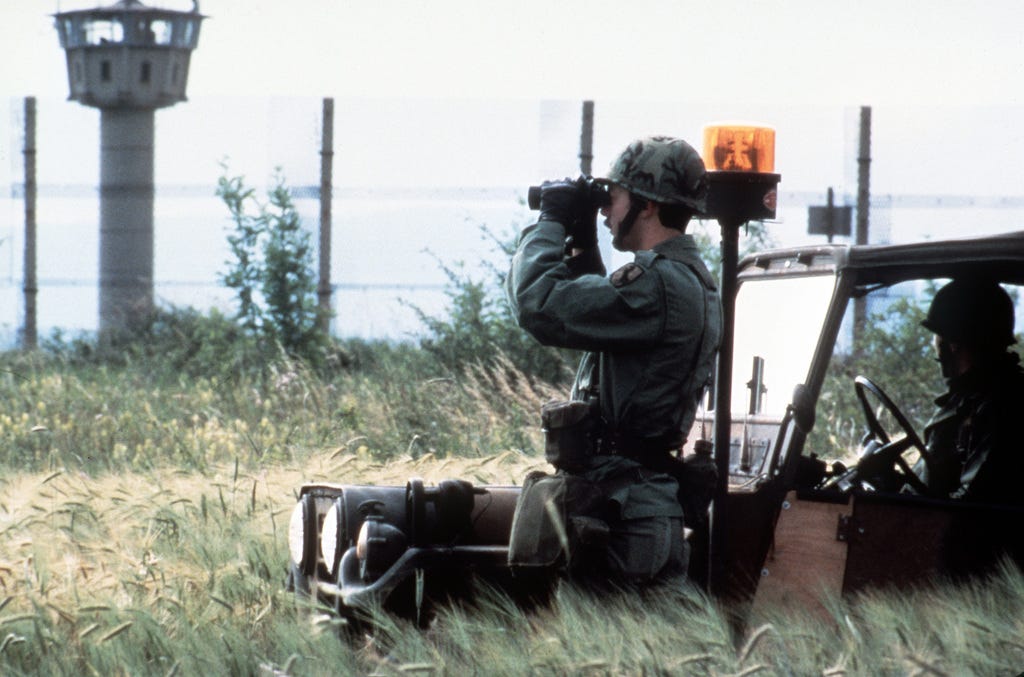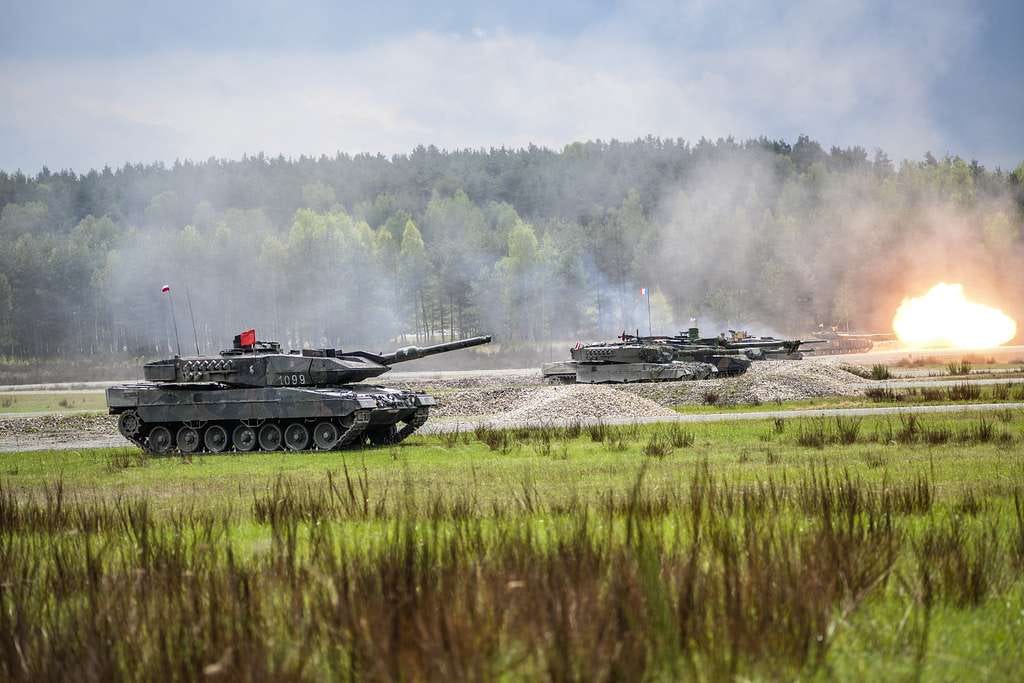Boiling the Frog - Arms Supplies and Escalation in Ukraine
How did the West manage to supply heavy equipment to Ukraine without provoking Russian escalation?
To address the logic behind Western arms supplies to Ukraine, it must first be acknowledged that the welfare of Ukraine is the priority of no government but Ukraine’s. That is not to say that the West has no genuine desire to help Ukraine, but that it is merely one of a number of priorities. In particular, each nation weighs its own security interests above those of Ukraine. It is willing to aid Ukraine only to the extent that it does not risk its own security.
After all, a state that prioritized Ukrainian security would conduct a “special military operation” of its own to forcefully remove all occupying forces from Ukraine’s territory. While war between any Western country and Russia would increase the risk of escalation, the tradeoff is nevertheless one favorable to Ukrainian security. Being actively invaded and occupied, risks of escalation are not Ukraine’s primary concern.
It is clear that Western powers, like all states, are self-interested. Arms supplies to Ukraine are provided on the basis that they improve the security of suppliers through the weakening of Russia and the deterrent effect Russian failure in Ukraine may have on other revisionist powers. There is a humanitarian and ideological component to supporting a democracy against an imperial and genocidal aggressor, but security concerns remain dominant.
Over the course of the war, Western arms supplies have ramped up. In the beginning, the United States supplied “defensive weapons” and Germany sent helmets. A year into the war, Western tanks are rolling in Ukraine. The two questions this raises are 1, How was this possible without provoking Russian escalation? 2. Why was the West reluctant to supply heavy equipment in the first place?
To answer these questions, we can turn to theories of escalation and nuclear confrontation. Economist and game theorist Thomas Schelling wrote in his seminal work on nuclear strategy, Arms and Influence, that while outright threats of nuclear use are not credible, nuclear powers may pressure one another by increasing the risk of nuclear use. This manipulation of risk tests the resolve of the participants; is it preferable to concede the issue or endure the mounting risk of nuclear war?
From this, in order to win a standoff between nuclear powers, you have to appear more committed than the other side. The unavoidable truth is that neither side is willing to endure a nuclear exchange. The question is who is willing to endure a higher risk of it. However, you can never know exactly how much risk your opponent is willing to tolerate, and they can never tell how much you will tolerate. If your opponent is willing to endure a lot of risk, it’s better not to test that fact and concede the point. Increasing the risk of nuclear war isn’t something to be done lightly.
Escalation, then, means taking steps to increase the risk of nuclear war. You can’t tell whether your opponent is actually committed or just pretending to be and escalation is the primary means available to test the commitment of an opponent. Changes to the nuclear posture or delegation of nuclear launch authority to lower level commanders create an environment where a nuclear exchange occurring through human error is a credible threat. As one might expect, this creates substantial pressure on both sides to bargain.
The threat of nuclear escalation is only credible when a power is in a situation that it may appear desperate. States will therefore deliberately paint themselves into a corner at times so that certain actions by their rivals will put them in a desperate position. An example of a way to create a credible risk of escalation is a tripwire force. The case of the NATO garrison of West Berlin is illustrative. If the Cold War went hot, there was no chance of the enclave holding out. Its significance was that Warsaw Pact forces would have to have killed a considerable number of NATO forces in order to take West Berlin.
Why was it necessary to send men into a hopeless position? This question returns us to deterrence theory and escalation. Without a substantial garrison expected to fight to the bitter end, West Berlin was vulnerable to a fait accompli. The Soviets might seize the city before NATO could respond and relatively bloodlessly. The city would be in Soviet hands and NATO could only regain it through all-out war with the Warsaw Pact. Since that possibility was not realistic, there was nothing to deter the Soviets from taking West Berlin, confident NATO would not respond with war.
The presence of a garrison changes the calculus dramatically. Suddenly, taking the city would mean pitched battle, with at least hundreds likely killed. The Soviets could not be confident that the garrison could be subdued before NATO could react. If they could not, NATO would be under strong pressure to escalate the conflict to relieve the garrison. Even if the garrison were subdued, their annihilation would be of sufficient political significance as to create a dramatic risk of war. In short, hostile action against West Berlin would have made NATO dangerously desperate.
The presence of a tripwire force changed the scenario from one in which Soviet action would create a new status quo, disfavoring NATO, to a scenario in which Soviet action against West Berlin would push both nations out onto the slippery slope. The presence of the garrison created the crucial link to make the threat of escalation credible.
In the case of Ukraine, Russia has very limited potential to threaten escalation. Its invasion is inarguably a war of choice. Third party arms supplies in a conflict are older than history and have considerable precedent during the Cold War. The Soviet Union did not initiate a nuclear exchange over Stinger missiles supplied to the Mujahideen in Afghanistan, nuclear threats over Javelin missiles would be equally unbelievable.
But it is believable that faced with the prospect of Ukraine being supplied with an insurmountable degree of materiel Russia would be in a desperate position. In the early days of the invasion, there was sufficient uncertainty that news of supplies of western armored fighting vehicles being sent en masse to Ukraine could have made Russia desperate. In such a scenario, there would be a test of resolve as the potential for a nuclear exchange increased.
In that case, arms supplies to Ukraine would become contingent on the West emerging victorious from this contest of wills. While the balance of power favors the West, Ukrainian security is far less important to the West than victory is to the Russians. In the event of confrontation, there would be significant pressure on Western governments to reduce the risk of nuclear exchange, whatever it might cost Ukraine.
This scenario was avoided via the gradual increase in intensity of weapons supplies to Ukraine. The gradualist approach was not only more palatable domestically, but it prevented the Russians from turning the supply of arms to Ukraine into a crisis. By initially providing primarily “defensive” weapons and other forms of military aid, the Russians could not act as though they were sufficiently perturbed as to make credible nuclear threats.
If Western arms deliveries had been in the form of a single, large, effort, Russia could have threatened escalation over them. The West would then have to either back down or try and call the bluff. It can be argued that the West should have nonetheless frontloaded its deliveries and braved the consequences of confrontation. However, the willingness of the vast coalition that provided arms to Ukraine varied. If members of the coalition chose to risk the confrontation, other members with less political will would be deterred from providing arms. A confrontation would create a dilemma where any form of arms supply would be considered credibly escalatory due to the crisis manufactured around the large shipments. Faced with a binary choice between confrontation and inaction, many countries would choose inaction.
The gradual escalation of arms deliveries therefore not only “boiled the frog" in the case of the Russians, but also in the case of reluctant suppliers. The Americans would have struggled to convince the Germans to send arms amidst a showdown with Russia over equipment deliveries at the conflict’s outset. By beginning with a modest but essential supply of equipment, nations joined that would have otherwise been deterred. As each escalation in equipment supplied met no real response from the Russians, objections to further arming Ukraine fell away. There was little chance of convincing the Germans to deliver main battle tanks at the invasion’s outset. But the Russians could not threaten escalation in response to German deliveries of helmets and as the threat of escalation fails to appear, the fears of it diminish. Rather than pressure mounting to make concessions to reduce the risk of nuclear war, pressures have mounted to give Ukraine the tools needed to defend its sovereignty.
The essential fact demonstrated by this case is that deterrence only holds when there’s a credible threat of escalation. If one side believes the other considers an issue too small to risk war over, it will not be deterred. The West was undeterred from providing arms to Ukraine because Russia could not threaten nuclear confrontation over deliveries of Javelins and helmets. As arms deliveries escalated and no response emerged, it became unbelievable that Russia would take action on that basis. As demonstrated, the nuclear strategy of manipulation of risk requires a crisis to be employed. If there is no crisis, one party cannot test the resolve of the other because its threats will not be taken seriously.







Good article! I am curious - it seems that Ukrainian attacks on Russian soil count are something that the Western powers would be unwilling to countenance, and this has led them to avoid supplying weapons capable of striking Russian targets. With Ukraine using indigenous resources to attack Russian targets, however, do you think by the logic of "boiling the frog" it will become feasible for the US to supply (as an example) ATACMS?